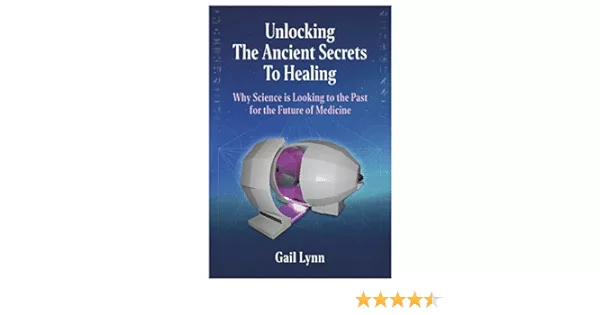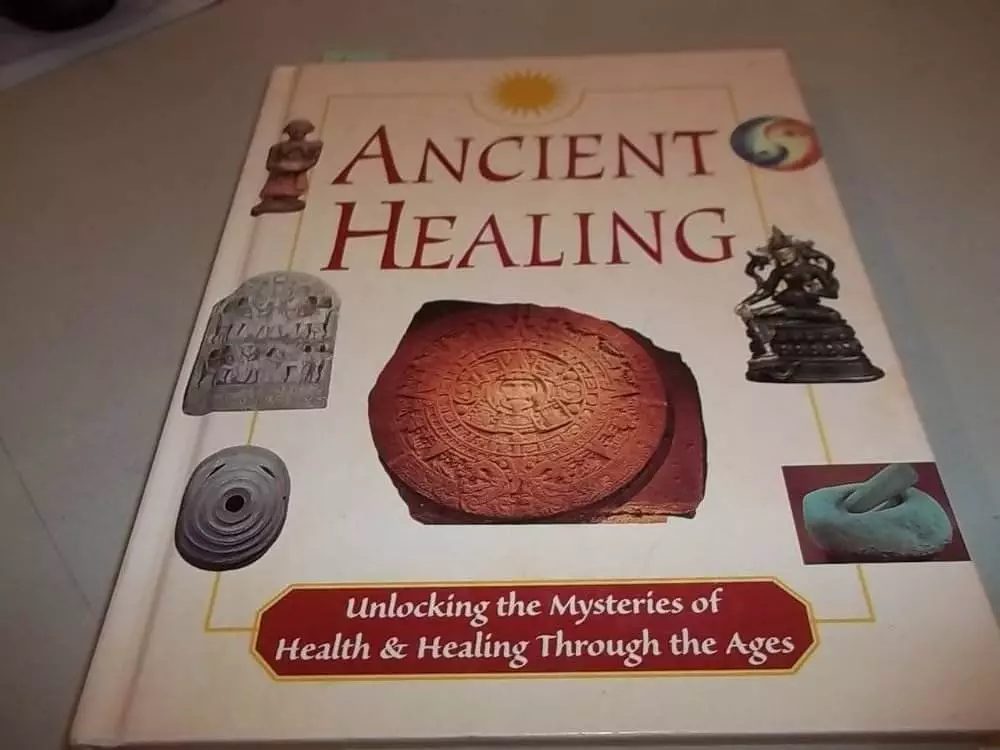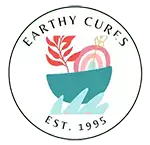
Throughout history, civilizations have developed healing techniques that have stood the test of time and continue to intrigue us today. In our article, “5 Ancient Healing Techniques: Unlocking the Secrets of Alternative Medicine,” we explore a collection of age-old practices that offer profound insights into alternative Medicine. From Traditional Chinese Medicine to Ayurveda, each technique holds its mystical charm and promises to unlock healing secrets, providing a captivating glimpse into the ancient wisdom passed down through generations. Join us on this mesmerizing journey as we delve into the hidden depths of these fascinating practices.

1. Ayurveda
Origin and Background
Ayurveda, originating from the Vedic civilization of ancient India, is one of the oldest systems of Medicine in the world. The term “Ayurveda” comes from the Sanskrit words “Ayur” (meaning life) and “Veda” (meaning knowledge). This holistic approach to health and well-being focuses on balancing the mind, body, and spirit.
Fundamental Principles
At the core of Ayurveda is the belief that each individual possesses a unique blend of energies known as doshas. These doshas, known as Vata, Pitta, and Kapha, determine a person’s physiological and psychological characteristics. Understanding one’s dosha composition is critical to maintaining a healthy lifestyle.
Doshas and Prakriti
The doshas, Vata, Pitta, and Kapha, represent the five elements (ether, air, fire, water, and earth) and their various combinations. Vata is associated with movement and change, Pitta relates to metabolism and digestion, and Kapha embodies stability and structure. Through a detailed analysis of an individual’s prakriti (constitution), Ayurvedic practitioners tailor treatments and lifestyle recommendations for optimal health.
Healing Techniques
Ayurveda employs many healing techniques to restore balance and promote well-being. These include herbal remedies, detoxification processes such as Panchakarma, various forms of massage therapy, yoga, meditation, and dietary changes. Ayurvedic treatments seek to address the root cause of illness rather than simply managing symptoms.
Herbs and Herbal Remedies
Ayurveda places great importance on using herbs and herbal remedies to treat various ailments. These natural substances are believed to possess medicinal qualities that restore balance and strengthen the body. Common Ayurvedic herbs include ginger, turmeric, ashwagandha, holy basil, and neem. Depending on the individual’s needs, these herbs can be consumed in various forms, such as teas, powders, or capsules.
2. Traditional Chinese Medicine
Historical Overview
Traditional Chinese Medicine (TCM) has a rich history spanning over 2,500 years. Developed in ancient China, TCM is deeply rooted in the principles of Daoism and Confucianism. This comprehensive system of Medicine comprises various healing modalities and is widely practiced in China and other parts of the world today.
Concepts of Yin and Yang
Central to TCM is the concept of Yin and Yang, two opposing but interconnected forces in all life aspects. Yin represents the feminine, dark, and passive aspects, while Yang represents the masculine, bright, and active aspects. The balance between Yin and Yang is crucial for optimal health and well-being.
Five Elements Theory
The Five Elements Theory, another fundamental principle of TCM, describes the interconnectedness of the natural world and the human body. Wood, Fire, Earth, Metal, and Water symbolize different organ systems and physiological functions. TCM practitioners use this theory to diagnose and treat imbalances in the body.
Acupuncture
One of the most well-known aspects of TCM is acupuncture, which involves the insertion of thin needles into specific points on the body to regulate the flow of Qi (vital energy). Acupuncture is believed to rebalance the body’s energetic pathways and promote healing.
Chinese Herbal Medicine
Chinese Herbal Medicine is integral to TCM and utilizes various medicinal plants, minerals, and animal products. These herbal remedies are prescribed in individualized formulations to address specific health concerns. Chinese herbs are typically combined to enhance their therapeutic effects and minimize potential side effects.
3. Unani Medicine
Introduction and Origins
Unani Medicine has its roots in ancient Greece and was further developed by prominent Muslim physicians during the Islamic Golden Age. Known as Yunani Medicine or Ionian Medicine, Unani Medicine emphasizes the balance between the four humors and their influence on overall health.
Principles and Philosophy
Unani Medicine is based on the belief that the human body is composed of four humors – blood, bile, phlegm, and black bile – and that an imbalance in these humors leads to illness. The focus is on maintaining a balance between these humors to promote well-being.
Humoral Theory
The humoral theory in Unani Medicine views each humor as associated with specific qualities and temperaments. Blood represents warmth and moisture, bile represents heat and dryness, phlegm represents coldness and moisture, and black bile represents coldness and dryness. Treatment involves modifying the qualities of these humors through diet, lifestyle changes, and herbal remedies.
Cupping Therapy
A popular healing technique used in Unani Medicine is cupping therapy. This involves placing glass or plastic cups on the skin to create a suction effect. Cupping is believed to improve blood circulation, relieve pain, and facilitate the elimination of toxins from the body.
Majoon and Qurs
Majoon and Qurs are two necessary medicinal preparations used in Unani Medicine. Majoon is a paste-like formulation consisting of various herbs, honey, and other ingredients, while Qurs are pills made from powdered herbs and minerals. These preparations are tailored to individual needs and are used for treating a wide range of illnesses.
4. Indigenous Australian Medicine
Cultural Background
Indigenous Australian Medicine refers to the traditional healing practices of the Aboriginal and Torres Strait Islander peoples. With a history spanning thousands of years, these medicinal traditions are deeply rooted in the spiritual and cultural beliefs of the Indigenous Australians.
Bush Medicine
Bush Medicine forms an integral part of indigenous healing practices. It involves using plants and other natural resources in the Australian bush to treat ailments. Traditional healers, known as Ngangkari, possess profound knowledge of the healing properties of various plants and use this wisdom to restore balance and well-being.
Witchetty Grubs
One unique aspect of Indigenous Australian Medicine is the use of witchetty grubs. These larvae of certain moths are a rich source of essential nutrients and have been consumed for centuries for their medicinal properties. Witchetty grubs are believed to boost the immune system, provide energy, and aid digestion.
Medicinal Plants
The Australian bush is teeming with a diverse range of medicinal plants. From tea tree oil to kangaroo apple, many native plants have powerful healing properties. These plants are often used as infusions, poultices, or medicinal preparations to address various health concerns.
Dreamtime Healing
Indigenous Australian Medicine is deeply intertwined with the concept of Dreamtime, a spiritual realm where ancestors and spirits reside. Dreamtime Healing involves connecting with the spiritual world through rituals, ceremonies, and storytelling. This holistic approach aims to restore harmony and balance to the individual and the community.

5. Native American Medicine
Traditional Healing Practices
Native American Medicine encompasses the traditional healing practices of various indigenous tribes across North America. These practices are deeply rooted in the spiritual beliefs of the Native American people and focus on the interconnectedness of all living beings.
Sweat Lodge Ceremonies
Sweat Lodge Ceremonies are an essential part of Native American healing traditions. Participants gather in a small enclosed structure known as a sweat lodge, where hot stones are heated, and water is poured onto them to create steam. This purifying and detoxifying ceremony is believed to cleanse the body, mind, and spirit.
Medicinal Plants and Herbs
Native American Medicine relies heavily on the abundant medicinal plants and herbs in the natural environment. Sage, cedar, sweetgrass, and tobacco are used for smudging rituals, purification, and spiritual healing. Many tribes also have their specific medicinal plants with unique healing properties.
Spiritual Healing
Spiritual healing is at the core of Native American Medicine. Native American healers, known as medicine men or women, connect with the spiritual realm to assist in healing physical, mental, and emotional imbalances. Ceremonies and rituals are conducted to restore harmony and balance to the individual and the community.
Singing and Chanting
Singing and chanting play a significant role in Native American healing practices. These melodic expressions are believed to carry healing vibrations and strengthen the connection to the spiritual world. They sang and chanted, invoking healing energies and promoting peace and well-being.
6. Egyptian Medicine
Historical Significance
Egyptian Medicine holds a significant place in the history of Medicine. Ancient Egyptians possessed an advanced understanding of the human body and developed sophisticated medical practices that have influenced modern medical science.
Ancient Medical Texts
Ancient Egyptian medical knowledge is preserved in texts such as the Ebers Papyrus and the Edwin Smith Papyrus. These texts provide detailed information about various diseases, treatments, and surgical procedures practiced during that era. Herbs, potions, and incantations can be found in these ancient texts.
Divination and Magical Rituals
Divination and magical rituals were an integral part of Egyptian Medicine. Physicians often incorporated rituals, incantations, and amulets in their healing practices. These rituals aimed to appease the gods, align the patients’ energies and promote healing.
Mummification
The mummification process provides insights into Egyptian beliefs about the afterlife and the preservation of the body. Understanding the intricacies of anatomy during the mummification process helped ancient Egyptians develop surgical techniques and treatments for various ailments.
Healing Temples
Healing temples were dedicated to healing gods, such as Imhotep and Sekhmet. These temples served as centers for medical education and healing practices. Priests often acted as physicians and used a combination of natural remedies, rituals, and spiritual guidance to treat the sick.

7. Greek Medicine
The Hippocratic School
Greek Medicine owes its development to the teachings of the renowned ancient Greek physician Hippocrates. The Hippocratic School emphasized observation, clinical experience, and the concept of the physician-patient relationship. Many of the principles of Greek Medicine laid the foundation for modern Medicine.
Four Humors Theory
The Four Humors Theory, introduced by Hippocrates, proposed that the human body consists of four primary humors – blood, yellow bile, black bile, and phlegm. An imbalance in these humors was believed to be the cause of illness. Greek physicians focused on restoring balance through treatments tailored to each individual’s unique constitution.
Greek Herbology
Greek Medicine placed great emphasis on the use of herbs for healing. Herbal remedies were prepared using a wide range of plants and botanical extracts. Notable Greek physicians, such as Dioscorides, compiled extensive herbal manuals listing various medicinal plants’ properties and uses.
Hydrotherapy
Greek Medicine recognized the therapeutic benefits of water and developed hydrotherapy as a treatment modality. Hydrotherapy involves using hot and cold water baths, steam baths, and mineral-rich springs. Greek physicians believed water could cleanse the body, improve circulation, and alleviate various ailments.
Holistic Approaches
Greek physicians understood the importance of addressing illness’s physical and psychological aspects. Greek Medicine emphasized the importance of a balanced lifestyle, including exercise, diet, rest, and mental wellbeing. Holistic approaches to health were integral to Greek Medicine.
8. Japanese Kampo Medicine
Introduction to Kampo
Kampo Medicine originated in China and was introduced to Japan over a thousand years ago. Over time, it has evolved into a unique system of Medicine that combines traditional Chinese medicine principles with Japanese cultural influences.
Shanghan Lun
Shanghan Lun, also known as the Treatise on Cold Damage, is a fundamental text in Kampo Medicine. This text provides insights into the diagnosis and treatment of epidemic diseases. Kampo practitioners use these principles to diagnose and treat various health conditions.
Internal and External Therapies
Kampo Medicine utilizes a combination of internal and external therapies. Internally, herbal medicines are prescribed in individualized formulations to address specific imbalances in the body. Externally, treatments such as moxibustion (the burning of mugwort near acupuncture points) and topical herbal preparations stimulate healing.
Moxibustion
Moxibustion, a vital component of Kampo Medicine, involves burning mugwort (Artemisia vulgaris) near specific acupoints on the body. The warmth generated by moxibustion is believed to stimulate the flow of Qi and blood, promoting healing and well-being.
Individualized Treatments
Kampo Medicine places excellent emphasis on individualized treatments. To create personalized treatment plans, practitioners consider each person’s unique constitution, including physical and emotional characteristics. This approach ensures that the treatment is tailored to the specific needs of the individual.

9. Persian Medicine
Historical Development
Persian Medicine, also known as Avicenna Medicine or the Unani-Tibb system, has its roots in the teachings of the esteemed Persian physician Avicenna. Avicenna’s renowned work, The Canon of Medicine, is a comprehensive medical encyclopedia that influenced medical practices across the Islamic world.
The Canon of Medicine
The Canon of Medicine, a significant work in Persian Medicine, covers various medical topics, from anatomy and physiology to diagnoses and treatments. Avicenna’s holistic approach to Medicine emphasized the balance of the body’s four senses of humor and the importance of individualized treatments.
Pulse Diagnosis
Pulse diagnosis is a vital diagnostic method employed in Persian Medicine. Practitioners assess the characteristics of the pulse to gain insights into the state of the individual’s organs, humor, and overall health. This allows for a more accurate diagnosis and formulation of a treatment plan.
Hijama (Cupping)
Hijama, commonly known as cupping therapy, is widely used in Persian Medicine. Cupping involves placing cups on the skin to create suction, promoting blood flow and circulation. This therapy is believed to alleviate pain, reduce inflammation, and detoxify the body.
Ghaza (Dietary Therapy)
Dietary therapy, known as Ghaza, is an integral component of Persian Medicine. The emphasis is on consuming foods that balance the humor and promote well-being. Nutritional recommendations are tailored to individual needs and aim to prevent and treat various ailments.
10. Indigenous African Medicine
African Healing Traditions
Indigenous African Medicine encompasses diverse healing traditions, each unique to different African cultures. These traditions have been passed down through generations and continue to play a vital role in the healthcare of many African communities.
Divination and Ancestral Worship
Divination and ancestral worship form an integral part of Indigenous African Medicine. Traditional healers (herbalists or sangomas) communicate with the spirits and ancestors to access healing knowledge and guidance. Divination techniques, such as throwing bones or interpreting dreams, are used to diagnose and understand illnesses.
Herbalism and Ethnobotany
Herbalism and ethnobotany are central to Indigenous African healing practices. These traditions involve using medicinal plants, herbs, and other natural resources to treat various ailments. Traditional healers possess extensive knowledge about these plants’ properties and effective use, often gathered through observation and passed down through oral traditions.
Spiritual Healing Practices
Spiritual healing is a cornerstone of Indigenous African Medicine. Traditional healers employ rituals, ceremonies, and dances to channel healing energy and restore harmony. These practices aim to address the spiritual root causes of illness and promote holistic well-being.
Rituals and Ceremonies
Rituals and ceremonies play a significant role in Indigenous African healing traditions. These events are often community-centered and involve dancing, singing, and communal prayer. Rituals and ceremonies create a healing environment and foster social support, strengthening the bonds within the community.
In conclusion, ancient healing techniques hold immense wisdom and provide unique perspectives on health and wellness. Ayurveda, Traditional Chinese Medicine, Unani Medicine, Indigenous Australian Medicine, Native American Medicine, Egyptian Medicine, Greek Medicine, Japanese Kampo Medicine, Persian Medicine, and Indigenous African Medicine all offer comprehensive systems of healing that prioritize balance, individualized approaches and a deep connection to nature and spirituality. Exploring these ancient healing traditions can inspire us to adopt a more holistic and integrated approach to our health and well-being.

